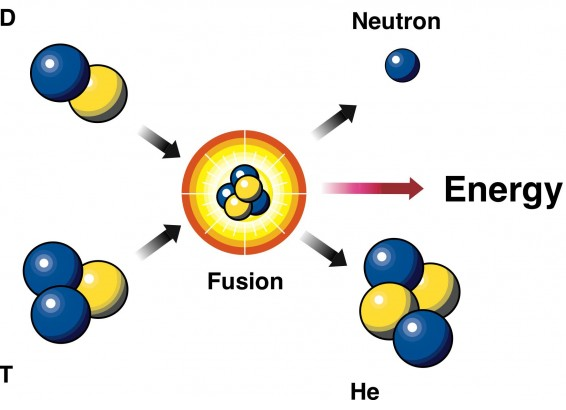Over the last series of posts on fusion, I have covered the history of research on fusion reactors. The first date in the timeline in 1946. A couple of scientists proposed something called a zeta pinch for the confinement, compression and heating of a plasma of hydrogen. By 1947, a zeta pinch device had been constructed and tested in the United Kingdom. In 1950, Soviet scientists proposed a torus shaped device they called a tokamak. Soon experiments were being run in the United States and the Soviet Union on different ways of applying magnetic fields in different shaped vessels to control the instabilities that appeared in magnetically confined plasmas.
After a decade of research on the tokamak approach, in the early 1960's a new type of fusion reactor was proposed. In this reactor, a spherical configuration of lasers bombarded a small pellet of deuterium and tritium to create a fusion reaction. A variety of laser configurations were tested and other means of heating the target were tried including bombardment with a stream of heavy ions. This approach was referred to as inertial confinement.
In the following posts, I detail many of the different hardware configurations that were tried for the two types of fusion initiation. Scientists in the U.S., the U.K., Germany, France, Japan, the Soviet Union, Russia, China and Japan worked on fusion projects. There were a number of international collaborations such as the Joint European Torus and the International Thermonuclear Experimental Reactor. The ITER project is a tokamak design that is still in the process of development and testing. It is located in the Cardarache facility in France.
Over the past fifty years, tens of billions of dollars have been spent on fusion research. Current expenditures for global fusion research are over a billion dollars a year. So what is the prognosis for commercial energy production with fusion? One recent estimate concluded that it would require over one hundred billion dollars and fifty years to achieve commercial fusion power reactors. For the entire history of fusion, estimates have consistently said that commercial fusion power is decades away. After fifty years, the estimate is still that practical fusion power is decades away.
As attractive as the concept of creating electrical power with isotopes of hydrogen is, it does not appear that fusion power will have any significant role to play in our current energy economy other than consuming billions of dollars. There is a closing window of a few decades for the human race to stop pumping carbon dioxide into the atmosphere before climate change destroys human civilization. Obviously fusion power will not be online soon enough to help us with that problem.
As much as I would love to see science tame nuclear fusion I am skeptical that it will ever happen. There are so many serious problems facing human civilization that we will be lucky if it survives until 2060. There may not be a hundred billion dollars available to contribute to fusion research during that time.
Basic fusion reaction where deuterium (D) and tritium (T) fuse to create helium:
